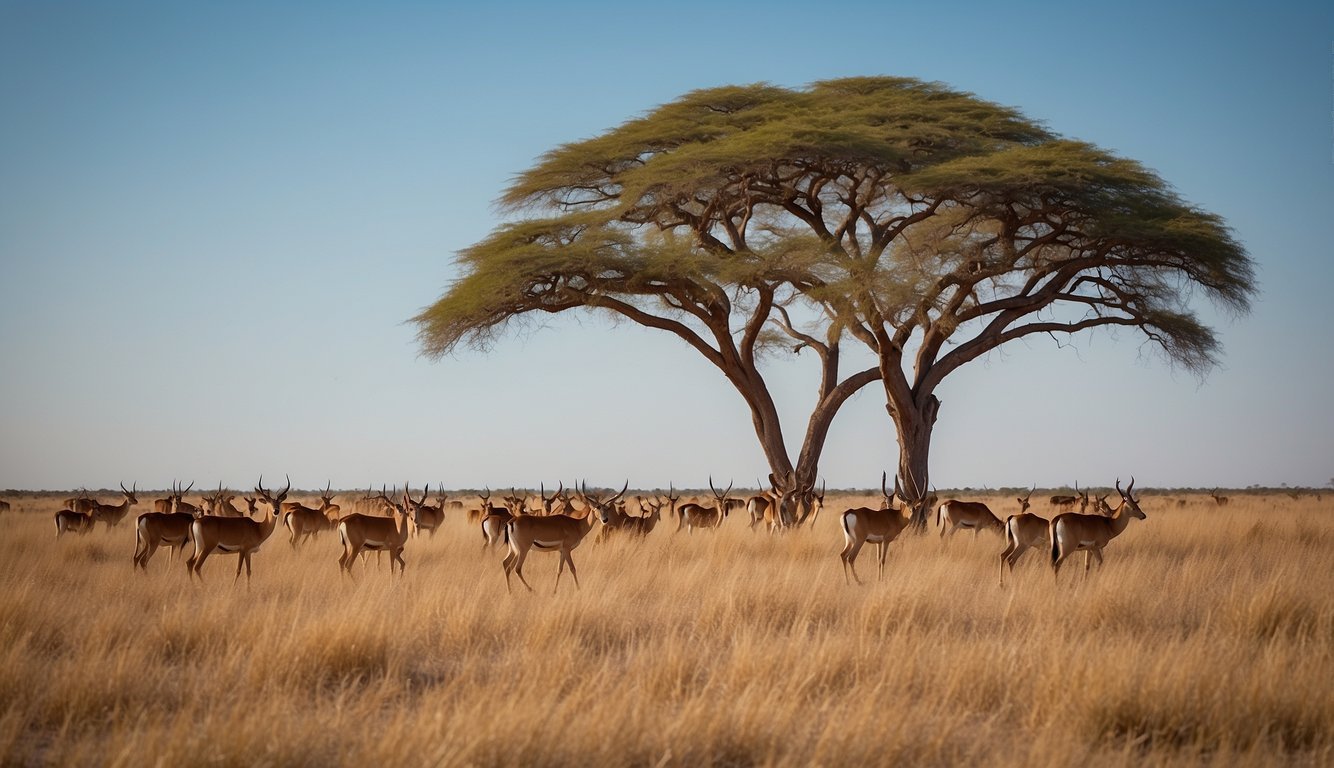Impala Overview

The impala is as fascinating as it is athletic, boasting incredible jumping ability and a rich history. This section delves into the impala’s past, the impressive features that make it stand out in the animal kingdom, and its importance to both the ecosystem and human observers.
History and Evolution
The impala, scientifically known as Aepyceros melampus, has roamed the African savannahs for millennia. It has adapted to its environment, developing remarkable traits to survive predators and the changing landscape. The East African impala, as detailed in the research from ResearchGate, is a common phenotype and not a separate subspecies. The name “impala” comes from the Zulu language, highlighting its African roots and significance in local cultures.
Design and Features
This medium-sized antelope is known for its agile build, which allows for astounding leaps of up to 3 meters high and 10 meters long. The impala is recognized by its slick, reddish-brown coat and the distinctive lyre-shaped horns found on males, which can grow up to 90 cm. Females, while hornless, share the same sleek body design that aids in quick escapes from predators like lions and cheetahs. The physical characteristics of the Impala demonstrate an evolved blend of speed and endurance, crucial for survival on the savannah.
Market and Consumer Salience
While impalas are not consumed en masse, they hold significant value in the African safari and tourism industry. Tourists flock to reserves to witness the impala’s grace and agility firsthand. Conservation efforts ensure sustainable populations, keeping this iconic species central to the ecological health and economy of the regions they inhabit. The impala’s role in nature and its impact on human commerce and leisure activities cannot be overstated, and its presence in the wild contributes to a healthy, balanced ecosystem.
Impala Wildlife
The impala, a medium-sized African antelope, exhibits remarkable adaptability and a complex social structure. With a diverse diet and a knack for survival in various habitats, impalas are an integral part of the ecosystems across Africa.
Behavior and Habitat
Impalas, scientifically known as Aepyceros melampus, thrive in woodlands and savannas across southern Africa. These adaptable mammals prefer regions with a mix of woodlands and open areas, where they can browse on shrubs, bushes, and grasses. The availability of this varied diet climbs during the rainy season, filling out the impala’s menu.
These antelopes are known for their agility and can clear formidable obstacles with their powerful leaps. During mating season, or the rut, males become quite vocal and fiercely competitive, defending territories to attract females. Social structures range from mixed-sex herds to bachelor groups, with dominance changing as males challenge rivals to secure mating rights.
Conservation Status
Currently listed as of “Least Concern” by the IUCN, impala populations are stable, though they face threats from habitat loss and hunting. They are a keystone species, crucial for their environment and the continued survival of other species, such as predators like lions. Effective conservation efforts and wildlife management practices have allowed impalas to maintain stable numbers in regions like South Africa, despite the pressures facing many other African wildlife species. Successful reproduction and a high calving rate also contribute to their steady presence in the wild. Their importance is recognized by organizations like National Geographic, which features impalas as symbols of Africa’s diverse and vibrant wildlife.

